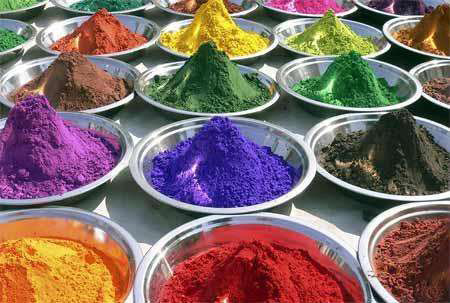Good pigment can not be separated from these performance indicators, that is, pigment shade, tinting strength, hiding power, solvent resistance and various fastness, the following by the color Swiss Xiaobian for everyone to brief it.

1. Coloring performance is the color shade (hue) of a paint color. For a long time, visual judgment has always been the basic predominant color evaluation method, relying on the eyes of a professional colorist who personally trained. What people's eyes can be used as a standard? Usually difficult to define. The development of color evaluation technology has formed a more scientific evaluation system, for example, the use of tester, you can do qualitative and quantitative data to describe the color. The definition of a color can not be described verbally, for example, "red" or red, even if you use more modifiers, such as "magenta," "brick red," "red Bordeaux," and not accurate. To produce a color sample, such as a color card, a more intuitive definition of a color. For practical applications, people are more accustomed to the needs of the color, to determine a standard pigment, and then according to the specific dispersion system, the sample to be tested and standard samples were made into a certain depth of color samples, and then compare Kind and standard kind of color difference. Commonly used color system CIE * LAB system, and XYZ tristimulus system, you can convert each other.
2. Coloring, the concept of tinting strength, the absolute tinting strength and relative tinting strength. The absolute tinting strength is based on the absorbance of the pigment, ie the total extinction coefficient at the maximum absorption wavelength or over the entire visible spectrum (the latter can be in terms of different spectral components). The relative tinting strength is the relative value between the sample and the standard and the absorption coefficient. When the same color depth is reached, the ratio of the number of sample pigments to the number of standard pigments matches. It is not always possible to find an exact match because of the inherent differences in shade between the two that can not be eliminated by the number alone and the color differences can be expressed in the CIE * LAB system. Pigment color strength according to the application conditions of the pigment, that is, different color display methods, as well as measurement methods, evaluation methods are different, there will be different results.
3. Hiding power or transparency refers to the ability of the pigment medium layer to hide the color difference of the substrate. The definition is a certain number of pigment-pigmented coatings, the area covered completely, or the minimum thickness of the layer required to cover a substrate . A coating to effectively cover the substrate must be scattered, the amount of scattering and the thickness of the coating, the absorption of light within the coating, the color difference between the substrate size.
4. Solvent resistance and various fastness, according to the definition of pigment, should be insoluble in the application medium, but absolutely insoluble is not possible, depending on the medium or processing conditions are different, more or less will be some soluble, so in The carrier of the solvent reaches a certain amount of time there will be recrystallization, bleeding, jet overflow, etc., to prevent the dissolution of the pigment is very important. Factors that control pigment solubility in the medium include: choice of solvent, chemical structure of the pigment, particle size, processing temperature. A test method for detecting the resistance of a pigment to a solvent: The pigment is rolled up with a piece of filter paper and placed in a test tube. The weight of the pigment and solvent is determined by adding the solvent. After standing at room temperature for 24 hours, the degree of staining of the solvent was used to evaluate the solvent resistance of the pigment. This method can not completely represent the actual application, but can determine the trend, there is guidance. If the pigment is clearly dissolved, the pigment is used in a medium containing such a solvent and problems of color, rheology, fastness and the like occur.
5. Water resistance, soaping resistance, alkali resistance, acid resistance: There are two aspects, one is the chemical stability in these media, and the second is the solubility in these media. Concept without too much explanation. Mainly for the pigment processing environment and the application environment, for example, cake squeeze water phase conversion process, you need to paint the water, ink printing requirements of water-resistant, or alkali water. Again, the requirements of exterior coatings resistant to alkaline cement or lime, car wash automotive paint alkali-resistant water and detergents.

Some lake pigments, or pigments that contain free acids or basic groups, form salts in acids or bases, change color, and the like. These performance tests, there is a standard test method, its evaluation is in accordance with the level of 1-5, 5 is the best. According to the application to determine the appropriate detection methods, the pigment is exposed directly to the acid and alkali and other materials, than the paint and paint into a layer, and then contact with acid and alkali, the results will be very different.
Copyright © 2024 ZHEJIANG CAINO CHEMICAL CO.,LTD All Rights Reserved
技术支持:杭州哈博信息技术有限公司